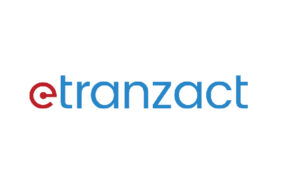
Source: Mckinsey
Innovations, entrepreneurs, and capital are reshaping Africa’s fast-growing electronic-payments landscape with solutions for consumers and businesses alike.
Human commerce has always sought more efficient mediums of exchange, and now this innovation is accelerating. The 21st century has witnessed dramatic shifts in how people pay for goods and services, with electronic payments increasingly displacing cash and, more recently, cryptocurrency and digital currencies emerging as alternatives to traditional conceptions of money.1
Africa has kept pace with—and in some cases even led—this innovation, and an influx of new investments and regulatory shifts continues to shape the e-payments landscape on the continent. Although cash is still king in Africa, a McKinsey survey suggests that its supremacy is likely to be challenged in the coming years as e-payments gain momentum..
With banks and nonbank players alike innovating to reduce friction in domestic and cross-border payments and deliver much-needed new solutions to consumers and businesses, Africa’s domestic e-payments market is expected to see revenues grow by approximately 20 percent per year, reaching around $40 billion by 2025,3 compared with about $200 billion in Latin America.4 By comparison, global payments revenue is projected to grow at 7 percent annually over the same period.
This article presents insights from African experts along with our analysis of what is driving the growth of e-payments on the continent. It highlights the challenges and possibilities for organizations looking to find their niche in this rapidly evolving and increasingly competitive landscape.
An accelerating shift to digital payments in Africa
Globally, electronic payments are a booming industry, having attracted more investment than any other financial-services sector and delivered the highest returns and growth in the sector over the past decade.5 Africa has been no exception. In 2020, Africa’s e-payments industry, across domestic and cross-border payments, generated approximately $24 billion in revenues, of which about $15 billion was domestic electronic payments. The domestic electronic-payments revenue of $15 billion was generated from 47 billion individual transactions totaling just over $800 billion of transaction values.6 However, on average, only 5 to 7 percent of all payment transactions in Africa were made via electronic or digital channels, compared with 50 percent or more in Turkey, for instance.7 This means e-payments are a major growth opportunity on the continent, especially as the convenience and scalability of payment methods improve and supporting infrastructure develops.
E-payments in Africa have been gaining momentum since 2000 and, as in the rest of the world, have taken a leap forward during the COVID-19 pandemic. Many African countries have seen record growth in e-payments over the past two years: mobile-money transaction volumes in Nigeria doubled to around 800 million in 2020, according to the Central Bank of Nigeria, while data from South Africa show that online commerce grew by around 40 percent during lockdowns in 2020 and 2021.8
Around 80 percent of respondents to McKinsey’s survey of payments experts across Africa believe that the shift to e-payments not only will endure but will accelerate, with 84 percent expecting e-payments to grow by at least 30 percent per year through 2025. A third of respondents expect a 50 percent annual increase. Overall, McKinsey anticipates that between 2020 and 2025, the e-payments market will grow by around 150 percent to reach almost $40 billion in revenues from domestic payments alone, with about 188 billion in transaction volumes.
However, this growth is likely to be uneven across the continent and will depend on infrastructure readiness, e-commerce penetration, mobile-money9 penetration, and regulation, among other factors, in each market.10 Some countries—notably Egypt, Ghana, Kenya, Nigeria, and South Africa—have managed the transition to digital faster than others and either have or are rapidly developing the appropriate infrastructure and relevant policy frameworks to deliver a sophisticated electronic-payments system.
It is likely that around half of future electronic-payments revenue will come from these five countries, with the fastest growth in Nigeria, at 35 percent per year. Other countries that will see strong growth above 20 percent per year include Ghana, Ivory Coast Kenya, Senegal, and Uganda. As other markets expand, South Africa is likely to represent a smaller share overall while remaining the biggest e-payments market in Africa in 2025, with $5 billion in annual revenues.
Four forces shaping the outlook for e-payments
Favorable demographics and economic growth, technology innovation, and advances in payments infrastructure are working together to shape the future of payments in Africa. An additional force—the impact of newer disruptions such as digital currencies and open banking—is harder to predict.
Favorable demographics and economic growth, technology innovation, and advances in payments infrastructure are working together to shape the future of payments in Africa.
Young city dwellers and strong economic fundamentals
Young, urbanized consumers and strong economic fundamentals are providing fertile ground for growth. Africa has the fastest population growth rate in the world, averaging 2.7 percent per year, compared with a global average of 1 percent, and the youngest median age, 20 years.11 Most of these young people will likely live in cities by 2045.12 A young, urban population provides a ready market for e-payments, and growth already is resulting from shifts in how people transport themselves (e-hailing services), consume entertainment (streaming services), and shop (e-commerce).
Electronic payments are also likely to benefit from fundamental economic growth factors and falling data costs. African economies are showing signs of recovering from the economic setbacks of the COVID-19 pandemic. Across the continent, governments are looking to prioritize internet and mobile-phone penetration amid falling internet and mobile costs. Sub-Saharan Africa had more than 300 million mobile connections in 2017, 40 percent of which were smartphones, and this figure is expected to double to more than 600 million in 2022, with mobile-data traffic expected to grow sevenfold.13
Proliferation of alternative payment methods
As technology has advanced, so too has innovation. Consumers in Africa continue to benefit from an increase in the proliferation of alternative payment methods across the continent, offered by local and international fintech players and telecom companies. According to GSMA, globally registered mobile-money accounts stood at 1.2 billion in 2020, roughly equal to the population of the continent, with more than $2 billion in daily processed transactions, equivalent to more than 40 percent of the GDP of sub-Saharan Africa.14 International remittances terminating in mobile-money wallets grew by 65 percent year over year in 2020 to around $1 billion, with no signs of slowing.15 Digital wallets that are linked to a variety of payment methods, including cards, accounts, and mobile money, also are growing in availability and adoption. Card-linked digital wallets, for instance, are a significant driver of growth in issuance and usage of cards, including virtual cards.
New and innovative technologies are also enabling easier consumer and merchant transactions and new business models and offerings. For instance, integrated universal QR codes, including those sponsored or built by central banks or similar institutions, are helping to reduce complexity as the number of payment methods grows. For example, Ghana’s Quick Response service (GHQR) enables payments from bank accounts, mobile money, and cards, and Nigeria has launched the NQR, a similar solution. Meanwhile, interoperability between competing mobile wallets has been achieved in most countries.
Payments infrastructure is reducing friction and boosting integration
Infrastructure investments are helping to accelerate electronic payments domestically and across borders, while offline channels are proving to be a critical bridge between Africa’s large stock of cash and fast-growing electronic payments.
On the domestic payments front, Africa is experiencing an increase in real-time payments infrastructure enabling instant account-to-account transactions. A few countries are investing in new rails or upgrading existing ones with modern technology, but only six countries were live with real-time payments at the end of 2021. A recent ACI report showed that Nigeria is already in the top ten of global real-time transaction rankings in absolute terms, ahead of the US, Japan, and Brazil, while Kenya is among the ten countries expected to experience the fastest growth in real-time payments.16 Egypt has approved regulations to enable instant payments, and Ghana has recently introduced instant payments. Tanzania and other countries are following suit.
While investments in real-time payments infrastructure have been led mostly by central banks, regulators, or associations of banks and focused on domestic payments systems, a new breed of fintech and other players are also rapidly integrating end points across countries, developing modern rails that enable faster and cheaper intra-Africa cross-border payments. We expect that these solutions will continue to be scaled up across more geographies and payment methods.
The Pan-African Payment and Settlement System (PAPSS)—which is being developed by the African Continental Free Trade Area to ease payments constraints across Africa’s complex network of more than 50 countries and about 40 different currencies—is a potentially transformative development for cross-border payments.17 At the same time, regional initiatives such as the SADC RTGS18 are already helping to improve transaction settlements within regions that would previously have required more complex and expensive correspondent banking arrangements and counterparties outside of Africa.
Because of the continuing dominance of cash in Africa, offline channels, especially agent networks, are another critical component of African e-payments infrastructure. With the rise of mobile money in the late 2000s, these networks have extended beyond cash-in, cash-out (CICO) services, expanding in size and complexity to facilitate electronic payments and provide a platform for the distribution of financial services. SANEF in Nigeria, Mukuru in Southern Africa, and Fawry in Egypt are just a few examples of non-telecom agent networks, all with more than 100,000 access points. For banks, these networks with their lower operating costs have become a critical channel for customer acquisition and servicing, enabling access to a new segment of customers.
Because of the continuing dominance of cash in Africa, offline channels, especially agent networks, are another critical component of African e-payments infrastructure.
Disruptive innovations: Quantifying the impact
Despite skepticism around private cryptocurrencies, a wave of disruptive innovation enabled by regulation and central banks is already in motion in Africa, Europe, Latin America, and North America. Currently, more than ten African countries are in the process of launching central bank digital currencies (CBDCs). While none of these have taken off yet, the potential use cases of CBDCs are relevant for some of the most enduring challenges with payments and transfers in Africa, including offline payment solutions, cross-border payments, and cash transfers that could be more easily directed to specific target populations.
In addition, several privately issued stablecoins are increasing their utility, with more than $150 billion in global circulation and up to $100 billion in transactions per day. Although several mechanisms have been tested to maintain their peg to a unit of fiat currency, it is likely that the most enduring stablecoins will be fully reserved by currency deposits. In that case, more consumers would have the confidence to employ this tokenized cash for cross-border payments and corporate transfers, giving them access to the benefits associated with crypto: instant settlement, low-cost transactions, greater security, and increased transparency.
Despite the absence of legal backing and outright restrictions in some markets,19 three African countries—Kenya, Nigeria, and South Africa—already number in the top ten of Bitcoin trading volumes globally, with Nigeria at third place, behind the United States and Russia.20 (Other sources put Nigeria at number one.)
Although the influence of such innovations is difficult to predict, we expect cryptocurrencies, stablecoins, and CBDCs to have material effects on the outlook for e-payments in Africa, given the promising use cases and the historical tendency of Africa to embrace innovation at scale and leapfrog into the future. These dynamics are reflected in our survey responses: while the majority do not see cryptocurrencies gaining wide adoption in the short term, around 28 percent of respondents see regulatory easing and CBDCs as the most important drivers of digital-currency adoption over the next three years . Other McKinsey research has highlighted the regulatory uncertainties that surround stablecoins and CBDCs, noting that the “market is far too nascent to confidently predict outcomes.”21 The research also highlights that the greatest unlocks to future utility are better consumer education about digital assets, stronger cybersecurity measures, and access via a familiar, trusted interface such as an online banking portal.
The future of electronic payments: Payment methods, channels, and customer segments
Africa’s payments mix is evolving fast, with e-wallets continuing to grow the fastest. The future of electronic payments in Africa is one of tremendous growth and opportunity. There are several alternative ways to slice this growth and opportunity, including channels, parts of the value chain, segments, payment methods, and combinations of these. We will focus on payment methods (electronic wallets, cards, and accounts), payment channels (online and offline), and customer segments (consumers and small and medium-size enterprises).
We see five trends unfolding.
As wallets grow, cards keep generating revenue
Wallets are expected to experience the fastest growth in revenues, but cards will remain a core revenue driver, partly because of their high penetration relative to wallets in key markets such as Egypt, Morocco, and South Africa.
We expect to see strong growth across all electronic-payment methods in Africa, in response to different factors. For example, account-based transactions will see growth associated with improved real-time payments infrastructure, even though this is limited to a few countries and hampered by persistent low account penetration. Card-based payments will grow, fueled by the ease of use for end users (both offline and online) and better economics for issuers. E-wallets will see growth, enabled by their ability to integrate several payment methods into one—including mobile money, a solid value proposition in the deeply fragmented landscape of payment methods in Africa.
Looking ahead, most experts surveyed think e-wallets, which will also integrate mobile money, will experience the fastest revenue growth in domestic payments. Cards, including virtual cards, are unique in their versatility: they can be linked to all available stores of value, including bank accounts and mobile money, and have better acceptance online, enabled by well-established processing networks and protocols. Take rates on online payments are also generally higher, which in turn is contributing to strong growth in card revenues. Many nonbank wallets are already linked to cards and mobile money rather than bank accounts. Lower know-your-customer (KYC) barriers, quicker first-use setup, increasing usability, and lower costs will continue to be important for the growth in wallets.
Looking ahead, most experts surveyed think e-wallets, which will also integrate mobile money, will experience the fastest revenue growth in domestic payments.
At the same time, we expect revenue intensity for cards will gradually decline.22 This is reflective of the long-term global trend toward lower take rates on cards, from which Africa is not exempt, and the gradual narrowing of the difference in take rates between cards and mobile money.23
As real-time payments infrastructure continues to develop, it is likely that accounts will get increasingly integrated into wallets in key countries such as Kenya and Nigeria. Despite improvements in real-time payments infrastructure, low bank account penetration and stricter KYC requirements will limit account-based payments.
Our estimates indicate that cards and wallets could each account for nearly 40 percent of revenues, with account-based payments accounting for less than 25 percent. The mix of payment methods will play out differently in each market. In Nigeria, for instance, account-to-account transfers and debit cards dominate. In Kenya and Ghana, the dominant method is mobile-money wallets, and in South Africa, it is cards.
Offline payments dominate, but online payments are growing faster
Until now, cash-based payments have dominated in less formal market economies across Africa, and this is expected to continue because the majority of payment volumes and values in these markets are for offline transactions. However, as a proportion of overall sales, online is expected to grow at a faster pace, especially as small and medium-size enterprises (SMEs) look to switch from cash to electronic payments and as offline merchants extend to online to capture growth. We estimate that the compound annual growth rate (CAGR) of revenues for online payments will exceed 30 percent, possibly reaching about $13 billion in 2025, meaning revenues will more than quadruple between 2020 and 2025.
Telecoms are fueling growth, but fintechs will gain relevance
Telecom companies are likely to continue fueling growth in consumer electronic payments, but fintechs will become increasingly relevant. Mobile money has been revolutionary for consumer payments in Africa. Over the past decade, telecom companies have been a major catalyst for payments growth in Africa through mobile money, as a result of introducing innovative payment solutions and other value-added services to their large customer bases.
This trend is expected to continue. Today, consumers have already moved from basic mobile money primarily offering peer-to-peer (P2P) transfers and cash in, cash out (Wallets 1.0) to wallets offering more complete financial services, including bill payments, savings, loans, and insurance (Wallets 2.0). We are already seeing improvements in Wallets 2.0, leading to feature-rich wallets that extend beyond the core financial services to include in-app shopping, access to services, and integration with online merchants, marketplaces, and platforms as a checkout option (Wallets 3.0).
This shift will not, however, be the reserve of telecoms, as mobile money has been. Fintechs will be important accelerators of the shift. Telecoms themselves are carving out and restructuring their mobile-money operations into fintechs, and leading banks have launched or are exploring similar plays.
About 42 percent of survey respondents say e-wallets backed by telecom companies will win the consumer digital-payments battle, followed by cards and e-wallets backed by banks and fintechs.
Fintechs boost uptake by smaller companies
Africa’s 80 million to 90 million SMEs remain a significant untapped opportunity in the payments space. Merchant acquisitions and associated offerings, fueled by fintech innovation, have played a substantial role in the recent growth in African payments. Experts responding to our survey say they expect this activity to intensify alongside a surge in value-added services for SMEs, such as lending, foreign-exchange solutions, analytics-based insights, and fraud guarantees.
Thirty-seven percent of respondents predict that specialist fintechs will be the front-runners in enabling SMEs to expand their footprint from offline to online via e-commerce. Among experts we surveyed, 92 percent predict that at least 25 percent of SMEs will have an online presence within the next three years. They also expect that e-commerce marketplaces such as Amazon, Jiji, Jumia, and Noon are likely to play a key role in enabling SMEs to get online. Together, 68 percent of respondents predict that these two market offerings (fintechs and marketplaces) will lead the charge in taking merchants online, while only 17 percent say banks will play this role.
Consolidation is expected, partly to achieve economies of scale
Scale is of paramount importance for the long-term economic viability of players in the payments landscape. While some markets are large enough for players other than the market leader to be economically viable, ultimately the economic advantages are ruthlessly in favor of scale. For instance, McKinsey’s own research showed that in Europe, a constellation of 25 to 30 acquirers in 2006 morphed into two mega-acquirers by 2019. If Africa’s e-payments landscape evolves similarly to that of Europe and the United States, then consolidation is probable. Eighty-five percent of experts surveyed expect some form of consolidation in the market over the next three years.
Consolidation happens primarily in two ways: either through vertical integration of individual players across the value chain from acquisition through issuance or else through mergers and acquisitions within and across the value chain. When asked to choose which of these two consolidation paths is likely to be the primary path, 65 percent of survey respondents who expect consolidation select vertical integration, while one quarter select consolidation within specific parts of the value chain, creating megaplayers. Both of these processes are already under way. For example, networks are acquiring merchant acquirers—as players’ value propositions and business offerings mature—and infrastructure players are rapidly moving into acquisition and issuance. However, Africa’s largest players remain subscale compared with payments leaders in other markets.
We expect that international players looking to Africa as a growth market will remain an important cause of consolidation. Slower growth, greater maturity, and heightened competition in the home markets of international players, combined with the faster growth, higher margins, less competition, and relatively cheaper acquisition opportunities in Africa, will likely continue to stoke international interest in African e-payments. Thus far, large global players have mostly preferred partnerships with and investments in local players to outright acquisitions, as Africa remains a complex landscape.
Finally, how banks respond to the strong competition from fintechs and telcos for payments revenue will be an important factor in shaping the landscape. One effective approach is the creation of industry utilities. The banking industry has a long history of creating very successful utilities. In our article on banking industry utilities focused on payments,24 we detail how these go much further than achieving cost-efficiency to enabling innovation and growth. Some readily recognizable examples of successful banking utilities, some of which have long been divested, include MasterCard, SWIFT, Visa, and, more recently, TruSight and Zelle.
In Africa, we have seen successful examples of banks pooling together to create technology and distribution platforms that support scale at a lower cost to individual banks. PesaLink, Kenya’s real-time payment rail, is an industry-led initiative cosponsored by more than 20 banks.
In Nigeria, Unified Payments, a provider of payments services and infrastructure, was incorporated by a consortium of leading banks in 1997. More recently, the Shared Agent Network Expansion Facilities (SANEF) platform was created in 2019 by the Central Bank of Nigeria and deposit money banks; it already has nearly 600,000 agents across the country. We expect to see the creation of more of these types of partnerships and consortia that enable banks to share costs and investments and accelerate innovation.
Africa has barely scratched the surface
Africa’s digital-payments landscape has exploded in the past two decades and now includes several types of new and incumbent players addressing various customer challenges. In 2021 alone, the number of new fintech start-ups receiving funding was nearly 250, up from 38 in 2019.25 While it is premature to start naming winners and losers in Africa, our view is that enough opportunities exist on the continent to sustain strong growth for several years to come. Significant gaps remain; closing them will require players across the spectrum.
Opportunities for banks
Banks are expected to continue playing a leading role in payments, although our survey indicates that their market share is being challenged. The business models and economics of traditional players such as banks—which are characterized by high operating costs, legacy infrastructure that is expensive to replace, and regulatory requirements that are complex and evolving—make them vulnerable to pressures on fee and processing margins.
Still, around 40 percent of experts we surveyed say banks can win the consumer digital-payments battle, and about 50 percent say banks are best suited to enable SME merchants to accept digital payments. We see four big opportunities for banks:
- Leverage their existing infrastructure and networks to capture the offline payments market, including the creation of industry utilities for scale and efficiency.
- Deliver embedded finance by integrating lending and other products into customer journeys and third-party platforms, radically expanding distribution and customer access.
- Offer payments-as-a-service, repositioning capabilities, footprint, products, and services as an integrated launchpad and growth platform for a growing ecosystem of innovators.
- Develop ecosystems through the consolidation of customer transaction enablement and participation across verticals.
Leveraging existing infrastructure. Banks can leverage their existing infrastructure and networks, including branches, ATMs, and agents, to capture the offline payments market, which is likely to remain the dominant channel for several years, despite the rapid growth of online payments. Basic services, including CICO, will continue to be high-margin essentials in a market where cash still accounts for more than 90 percent of all transactions.
Banks can leverage their existing infrastructure and networks to capture the offline payments market, which is likely to remain the dominant channel for several years.
In particular, SME merchant acquiring is an attractive opportunity for banks. Although we are seeing strong adoption by SMEs of online channels, these are often channel extensions, rather than replacements. The majority of merchants remain offline, and that is where acquirers will need to locate them. Fintechs and telecom companies that have built agent networks to facilitate transfers and CICO are already positioning these as merchant-acquiring platforms with payments acceptance; banks could do the same with their legacy infrastructure. The creation of industry utilities, which we discussed earlier, is a practical option for banks looking for ways to create scalable platforms out of their existing infrastructure and networks.
Embedded finance. Banks can integrate lending and other products into customer journeys and third-party platforms, radically expanding distribution and customer access. Banks are well placed to expand access to third-party customers (including those without a bank account) by developing and packaging new, flexible financial services that are integrated into customer journeys and third-party platforms, thus expanding the distribution channels and reach of these products beyond the bank’s proprietary customer base and channels. Integrating lending, investments, and other banking products tightly into the customer journeys across wallets, e-commerce, and fintech offerings could radically expand the addressable market for banks and extend the scope of distribution well beyond people with bank accounts. Global moves that have yet to take off at scale in Africa include “buy now, pay later” integrated into e-commerce and consumer-lending offerings embedded in wallets. Early examples, such as MTN and AFB Ghana (now Letshego) Qwikloan, KCB M-PESA loan, and Wakanow’s Pay Small Small in partnership with FCMB Bank in Nigeria are great examples of innovation in this space.
The opportunity is significant for banks in particular. In most countries, less than 50 percent of people above the age of 15 have a bank account (for example, 42 percent in Ghana, 39 percent in Nigeria, 35 percent in Ethiopia). Yet wallet penetration is more than 100 percent in Kenya and Ghana, e-commerce is showing strong growth, and fintechs are rapidly acquiring customers and merchants.
Payments as a service. Banks can reposition capabilities, footprint, products, and services as an integrated launchpad and growth platform for a growing ecosystem of innovators—fintechs and internet companies looking to scale rapidly and improve their unit economics. Banks have the regulatory authorization to offer a wide range of products and capabilities, such as foreign-exchange trading, credit, and risk management, that fintechs and internet companies sometimes lack. Conversely, fintechs and internet companies are usually strong on product development and rapid technology innovation. For example, Stripe Treasury enables merchants to embed a range of financial services into their marketplace or platform. Though offered by Stripe, the core product is powered by banks, including Barclays Bank, Citibank, Evolve Bank & Trust, and Goldman Sachs. Partnerships of this kind could enable banks to access millions of merchants that would have been out of their reach while enabling fintech and e-commerce platforms to enrich their offerings and improve unit economics with capital and capabilities.
Banks with multicountry operations are also uniquely positioned to enable fast-growing fintechs to scale rapidly across the continent—for example, with sponsorships that significantly reduce the complexity and timelines for new market entry. Many fintechs in and out of Africa rely on banks for a range of services, including foreign exchange, settlements, and sponsorship, to offer products that are not permitted under specialized payments and similar licenses. Additionally, in the absence of mature regional payments infrastructure, banks with multicountry operations have an opportunity to leverage their cross-border operations to create private infrastructure that bridges the regional payments gap, especially for businesses. One example is Onyx, a blockchain-based platform developed by JP Morgan for wholesale payments transactions. The banks that deliberately and proactively position themselves as tech-enabled growth platforms with streamlined offerings today are likely to be among the biggest beneficiaries of rapid growth in e-payments.
Ecosystem development. Finally, because banks are already embedded in financial transactions across verticals, they have an opportunity to build robust platforms that consolidate transactions across these silos to create virtual ecosystems and retain customer ownership. Even within specific verticals and niches, banks could tailor their offering to deliver customized and value-added services that stand apart. There are many inspiring examples, including Kakao Bank in South Korea and DBS in Singapore, that are successfully building digital plays across multiple ecosystems. A few African banks are making similar moves, building digital-native plays in-house or carving out their payments businesses as platforms for an extended digital play. Nedbank’s Avo is a network of partnerships enabling consumers to perform a wide variety of shopping behaviors, such as finding a plumber or buying groceries. The platform also enables businesses to set up online storefronts and access logistics services.
We expect to see more banks creating nimbler operating models and shifting to new, open, and scalable technology architecture to capture new markets.
Opportunities for fintechs: Harnessing the SME and micro enterprise opportunity
Underserved SMEs remain an open opportunity for fintechs. In South Africa, more than 95 percent of SMEs are micro enterprises with fewer than ten employees, and more than 80 percent of these are informal or unregistered businesses.26 The situation is similar across the continent. Banks are limited both by regulation and cost in acquiring these merchants directly, and mobile money and wallets fall short of providing solutions that are more holistic. Millions of Africa’s SMEs are therefore left stranded.
Fintechs, with their tech-led models and lower operating costs, are well positioned to reach these merchants, but they may have to consider venturing offline to acquire them. There are several examples to learn from, including Square in the United States and PagSeguro in Brazil. These players have demonstrated that it is possible to do well in this space by focusing on specific verticals and creating offerings that are distinctive, crafting an effective sales and go-to-market strategy tailored to offline merchants, and ensuring that they are offering a broad service that goes beyond payments acceptance to include outward payments, access to lending, and the ability to track finances.
Fintechs also have some challenges to overcome as they seek to build trust with consumers and stay relevant while scaling up across Africa’s more than 50 markets. Talent is likely to be increasingly expensive and harder to find as demand increases. These players may also need to strengthen capabilities such as regulatory risk and foreign-exchange management to scale sustainably. Africa’s fintechs could partner with banks and global payment companies to bring in the know-how they need to support them as they scale, particularly regarding operations and regulatory risk management.
Opportunities for telecom companies
Because of their large customer bases, agent networks, and unique data, telecom companies have a natural advantage in the payments space. We see four potential opportunities:
- Reposition proprietary distribution networks as market platforms.
- Accelerate the pace of investments in innovation, including enhancement of current offerings, improved user experience, and migration of large offline customer bases to online and digital channels.
- Monetize data.
- Build cross-border remittances plays and partnerships.
Because of their large customer bases, agent networks, and unique data, telecom companies have a natural advantage in the payments space.
Repositioning proprietary distribution networks as market platforms. Telecom companies could reposition proprietary distribution and sales channels as market platforms to capture additional opportunities. Their extensive networks of agents have evolved mostly from pure airtime sales agents to mobile-money agents and could be transformed into broader distribution platforms that expand and aggregate their offering by including other players, such as banks and fintechs. Telecom companies risk losing out if their significant distribution networks remain closed off to other players, who are likely to build alternative networks. We have already seen this play out in Senegal, where Wave has built an agent network with wide coverage.27 In Egypt, Vodafone, the leading telecom company, is partnering with independent agent networks that are already large and dominant to enable its wallet and financial-services offerings.28
Accelerating the pace of innovation. Telecom companies could convert more of their passive customer base into an active transacting base at scale by accelerating the pace of digitization, improving the user experience, and enhancing their offerings. Many African players already have proprietary wallets built primarily to run on offline channels and older devices offering basic services such as transfers and bill payments. While these will continue to be relevant, they are unlikely to grow as fast as online channels, smarter devices, and offerings that respond to shifts in consumer behavior.
Improving the user experience will be key to capturing the next wave of growth from Africa’s young and fast-urbanizing population and becoming more embedded in their lives.
Improving the user experience will be key to maintaining a competitive advantage and capturing the next wave of growth from Africa’s young and fast-urbanizing population and becoming more embedded in their lives. Consumers have already replaced land-line-based phone calls with internet-based calls and social-media channels, internet-based mobility solutions are now commonplace, and streaming and subscription video on demand are more popular. In the United States and the United Kingdom, for instance, internet and home entertainment are nearly synonymous, and market leaders have developed bundled offerings that are embedded in consumers’ lives. Most leading telecom companies in Africa have the advantage of an existing convenient payment method, and with the right offerings and partnerships, they could achieve something similar.
Monetizing data. A third opportunity could be for telecoms to leverage the vast amounts of data they collect and store as part of everyday operations to create new products that provide critical insights to consumers, businesses, and third-party partners. Immediate applications could include credit-scoring services for underbanked customers (an underdeveloped but critical need across Africa), security services such as geolocation for payments authentication, or even validation services for cash transfer programs. Telecom data could also be leveraged to improve efficiencies and enhance the consumer experience—for example, through the development of tailored loyalty programs. Transactional data from mobile-money wallets means that telecom data is even richer now and can be leveraged for a variety of financial and other products, providing that customers’ consent has been obtained in compliance with privacy regulations. Even where regulations are not in place or are unclear, it will be important to ensure that consumer transparency and trust are high on the agenda.
Building cross-border remittances plays and partnerships. Cross-border remittance—a persistent challenge for consumers and businesses across Africa, with an estimated 75 percent of trades happening outside of official channels—offers a fourth area of opportunity.29 Most telecom companies are already present in several African markets, operate mobile-money wallets in each, and are well positioned to facilitate more efficient cross-border payments. Innovating to integrate e-wallets across their footprint alone could unlock significant opportunities for telecoms, especially for intra-Africa cross-border remittances. This is no easy undertaking. However, MFS and other players have successfully integrated a constellation of wallets across the continent into a single gateway and are building merchant-acquiring plays.
These examples show that for telecom companies in Africa to capture these opportunities, they may require new talent, capabilities, and technology. As a result, we are seeing that several companies are investing in modern technology and have either established or are establishing stand-alone fintechs to execute on payments and financial-services opportunities. We expect this to continue at pace and contribute to the accelerating growth in e-payments.
Opportunities for investors
Investors are being drawn to the rapid growth, untapped opportunities, and lower multiples of African fintechs. In 2021, more than 60 percent of all venture money above $200,000 that flowed into the continent was raised by African fintech firms. Twenty-one fundraising rounds above $50 million were recorded that year, almost ten times more than the year before. In addition, 2021 saw the highest annual growth ever recorded, at more than 264 percent—3.6 times more than the previous year.30
We see two broad plays for investors:
- Build platforms across investments, instead of offering isolated and discrete investments.
- Orchestrate the emergence of regional and continental players with scale.
Building platforms across investments. Investors could consider constructing portfolios of players that collectively address systemic challenges as an alternative to the individual selection of target players that do not always have obvious complementarities.
Orchestrating the emergence of bigger players. There are many new fintechs and few emerging leaders on the continent, so investors have an opportunity to orchestrate the emergence of bigger players with better economies of scale, including new regional champions. Africa is in the early stages of the evolution of its payments industry, and the largest players are still very small in scale and capabilities, compared with global leaders. Africa has more acquirers today than continental Europe had in 2006, and the European landscape has since consolidated to two mega-acquirers (Nexi and Worldline), both of which are still smaller than the leading acquirers in the United States. All of these players have limited plays in Africa, but we expect that the search for growth may lead them to Africa.
The regulatory landscape
In addition to improving the stability of their country’s financial systems, the majority of African regulators are taking actions geared to leveling the playing field and creating an enabling environment for financial inclusion and reduced cash usage. Regulators in several countries have introduced detailed data protection guidelines in the last three years, and some have set up regulatory sandboxes to accelerate innovation.31 In some cases, challenges such as lengthy licensing timelines, insufficient industry-wide data, and stringent banking regulation limit the pace of innovation. However, regulators remain perhaps the most influential participants in the ecosystem and may have an opportunity to shape growth in at least three ways:
- Modernize know-your-customer requirements and open-banking regulations.
- Collaborate across borders to enhance cross-border payments.
- Streamline regulation across jurisdictions to accelerate the pace of innovation.
Modernizing KYC requirements and open-banking regulations. Respondents to the McKinsey survey agree that digital KYC regulations and support for open banking could be among the most effective steps in the next few years to help steer more consumers toward e-payments. Though we have not seen significant movement on open banking thus far, it could be particularly impactful in accelerating the digitization of payments and creating the circumstances under which new types of players and offerings can emerge. This could help accelerate the decoupling of savings account balances and payments capabilities, giving consumers and businesses more basic transacting options that are not limited by the KYC and other requirements of full-fledged accounts.
Collaborating across borders to enhance cross-border payments. Another area of opportunity lies in collaboration across regulators to address the enduring challenges involved in intra-Africa cross-border payments. The PAPSS is a positive step in this direction, but while the vision of PAPSS is comparable to Europe’s Single Euro Payments Area (SEPA), one important difference is that SEPA requires participation from payments system players, while PAPSS is currently based on voluntary participation. We expect initiatives such as PAPSS to create a new paradigm for intra-African payments, accelerating the substitution of traditional arrangements of correspondent banking and intermediary structures with faster and cheaper alternatives. However, such multicountry schemes can take time to materialize. For instance, the Economic Community of West African States has been seeking to introduce a regional currency, the ECO, since 2003. The ECO would have covered 15 countries, while PAPSS aims to cover more than 50.
Streamlining regulation to accelerate the pace of innovation. Regulatory frameworks that protect the consumer and the financial system but also enable innovation will be important for accelerating migration to e-payments and deepening financial inclusion. In particular, adopting a global or pan-African outlook on local regulatory sandboxes, especially in the fintech hubs in Africa that already attract the lion’s share of investment and activity, could significantly accelerate the pace of innovation.
Africa’s e-payments market has entered a new era. Enduring pain points coupled with shifts in consumer and business behavior, as well as supportive government and regulatory environments, are opening up unprecedented opportunities for the acceleration of e-payments. Local, global, traditional, and new players are all innovating to capture the $40 billion of revenue potentially at stake by 2025. This is an exciting, complex, and evolving market with tremendous growth prospects, and we can expect to continue seeing a new generation of winners emerge and scale. Which players will move fastest?
Source: Mckinsey






